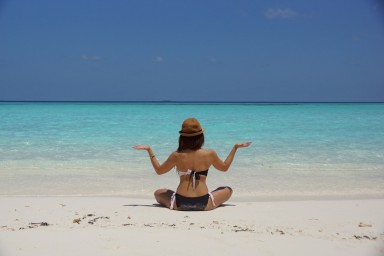 With a dizzying array of sunscreens to choose from, it can be difficult to determine which products are both safe and effective. In this article we’ll discuss screening your sunscreen for ingredient safety, delivery form, and level of protection provided.
With a dizzying array of sunscreens to choose from, it can be difficult to determine which products are both safe and effective. In this article we’ll discuss screening your sunscreen for ingredient safety, delivery form, and level of protection provided.
Mineral vs. Chemical
The active ingredients in sunscreens fall into one of two main categories: mineral (zinc oxide, titanium oxide) or chemical (oxybenzone, octisalate, octinoxate, etc). Most sunscreens use either mineral or chemical agents, but some products use a combination of both, so it’s important to read labels carefully. Many of the chemical ingredients used in sunscreens contain skin allergens as well as toxins that can affect the reproductive system. For example, higher oxybenzone levels have been associated with lower testosterone levels in adolescent boys and men.
Other ingredients of concern include inactive ingredients that are added as stabilizers and preservatives. One example is methylisothiazolinone, a preservative found in many sunscreens which can cause severe skin reactions. Due to these safety concerns with chemical ingredients, mineral sunscreens are preferable as they are protective, stable, and have negligible risk of penetrating the skin and getting absorbed into the body.
Spray vs. Cream
Sunscreen sprays are on the rise, as they are quicker and easier to apply. Unfortunately there are concerns about inhalation risks posed by this form of sunscreen, when they are used regularly. Even the safer mineral sunscreen ingredients pose risks if inhaled or swallowed. Another concern is that it’s unknown whether or not the sprays will coat the skin evenly enough to provide protection. The FDA has even considered banning sunscreen sprays unless manufacturers can prove that their products are protective and safe. For those looking for an alternative to creams, sunscreen sticks are a great option and come in a roll-up dispenser for easy application.
UVA/UVB/SPF
Sunscreen bottles are printed with an alphabet soup that can be confusing and misleading to consumers. UVA and UVB refer to different wavelengths of ultraviolet radiation from the sun: UVA rays are longer than UVB, account for 95% of UV radiation, penetrate the skin more deeply than UVB and contribute to skin aging and wrinkling. UVB rays affect the superficial layers of the skin and are the main cause of sunburn. UV radiation in general is a major contributor to the development of basal cell and squamous cell carcinomas, and also plays a significant role in many cases of melanoma, which is the deadliest form of skin cancer.
The sun protection number (SPF) on the bottle is a theoretical number suggesting product potency. For example, an SPF of 50 suggests that someone could stay in the sun 50 times longer than they normally would be able to before getting a sunburn.
Unfortunately this number, especially for higher SPF levels (>50), can be misleading for several reasons:
- The ratings are determined in artificial lab conditions, which do not translate well into real world sun exposure
- SPF gives an indication of whether the sunscreen blocks UVB rays (which cause sunburn) but provides no indication of UVA protection
- Higher SPF levels provide users a false sense of security, leading to sun overexposure.
Many countries have SPF levels capped at 30-50. Experts in the field, including certain FDA regulators and the Environmental Working Group believe the US should cap SPF levels at 50.
So what are we to do?
In 2007 consumer advocacy organization, The Environmental Working Group started to publish an annual Sunscreen Safety Guide. Along with general sunscreen safety information, they also rank sunscreens based on ingredient safety with the safest products receiving a rating of 1-2 (low hazard), 3-6 (moderate hazard), and 7-10 (high hazard). Thanks to the EWG’s success in raising consumer awareness and demand for safer products, there has been an increased number of safe sunscreens introduced to the market in recent years.
Over the years I have tried many of the sunscreens that fall in the 1-2 range from the EWG list, and here are some of my favorites:
- MyChelle Sun Shield, Unscented, SPF 28. This product is light and great for everyday use.
- Vanicream Sunscreen Broad Spectrum SPF 30. This is my favorite for pool and beach days. It rubs in easily, doesn’t have a ‘chalky’ feel for a mineral sunscreen, and it isn’t irritating to sensitive skin.
- Babyganics Pure Mineral Sunscreen Stick, SPF 50+. This will require rubbing in once applied, but it’s a nice alternative to creams and sprays and is easy to reapply after swimming.
Have a safe and healthy summer!
Amy Tyler, ND* received her Doctorate of Naturopathic Medicine from Bastyr University and also holds a BS in Chemical Engineering from the University of Texas at Austin. She takes the time to listen closely to her clients and to educate them, empowering them to gain a deeper understanding and ownership of their health. Her individualized wellness plans, incorporating herbs, homeopathy, nutritional supplements, and nutrition and lifestyle advice, are designed to support the body’s innate healing abilities.
References:

